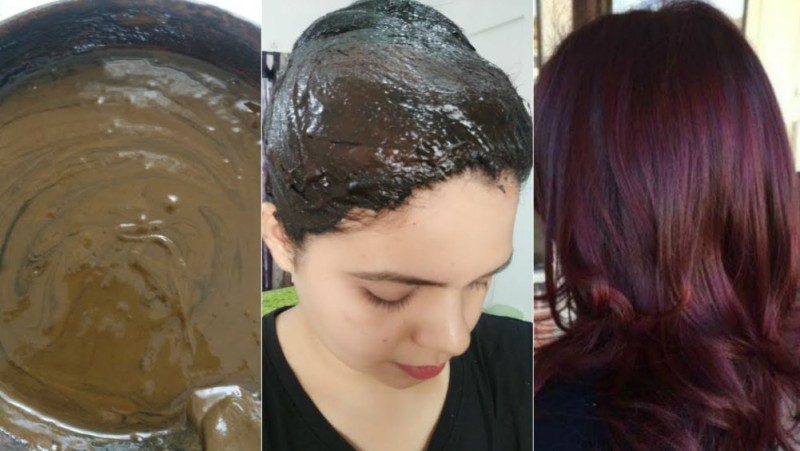
In today's world, where natural beauty is increasingly valued, henna stands out as a popular choice for coloring hair. Unlike chemical dyes that can damage hair over time, henna offers a natural alternative that not only colors but also nourishes and conditions your hair. Here’s a comprehensive guide on how to effectively use henna for coloring your hair, along with tips for achieving different shades.
Understanding Henna:
Henna, derived from the Lawsonia inermis plant, has been used for centuries in various cultures for hair and body art. It naturally colors hair red-orange due to lawsone, a compound found in its leaves. When applied to hair, henna coats each strand, enhancing its natural color and providing a vibrant hue.
Benefits of Using Henna:
Natural Conditioning: Henna not only colors your hair but also acts as a natural conditioner, making your hair softer, smoother, and shinier.
Safe and Chemical-Free: Unlike synthetic hair dyes that may contain harsh chemicals like ammonia and parabens, henna is free from such additives, making it gentle on both hair and scalp.
Long-Lasting Color: While the initial color may appear bright, henna tends to deepen and settle into a more natural shade over a few days, offering a long-lasting color solution.
Preparation:
Before applying henna to your hair, it’s essential to prepare the mixture properly to achieve desired results. Here’s a step-by-step guide:
Choosing Your Henna: Opt for high-quality, body art-grade henna powder from reputable suppliers. This ensures purity and maximum color payoff.
Ingredients for Mixing:
Henna powder
Warm water or herbal tea (such as chamomile or black tea) for better color release
Lemon juice or apple cider vinegar to help release dye molecules
Essential oils (like lavender or tea tree oil) for fragrance and additional hair benefits
Gloves and an old towel to protect your hands and clothes from staining
Mixing the Henna Paste:
In a non-metallic bowl, mix henna powder with enough warm water or tea to create a thick paste. The consistency should be similar to yogurt.
Add a tablespoon of lemon juice or apple cider vinegar per 100 grams of henna powder to enhance color release.
Optionally, add a few drops of essential oils for a pleasant fragrance and to boost hair health.
Resting Time: Cover the bowl with plastic wrap and let the henna paste sit at room temperature for 6-12 hours, allowing the dye to release fully. This step, called dye release, is crucial for achieving vibrant color.
Application:
Preparing Your Hair: Wash your hair with a clarifying shampoo to remove any buildup or oils. Avoid using conditioner as it can create a barrier that henna won’t penetrate effectively.
Applying the Henna:
Section your hair into manageable parts.
Wear gloves to protect your hands from staining and start applying the henna paste from the roots to the tips of each section, ensuring even coverage.
Use a brush or your fingers to work the paste into your hair thoroughly.
Wrapping Your Hair: Once applied, gather your hair on top of your head and cover it with a shower cap or plastic wrap to prevent the henna from drying out too quickly. This also helps in retaining heat, which aids in better dye release.
Processing Time: Leave the henna on your hair for 2-4 hours, depending on the intensity of color desired. Longer processing times generally result in deeper hues.
Rinsing Out: After the processing time is complete, rinse your hair thoroughly with water until the water runs clear. Avoid using shampoo immediately after rinsing, as this can strip away some of the henna color.
Post-Henna Care: Allow your hair to dry naturally. Over the next 48 hours, the color will continue to develop and deepen. You can apply a small amount of conditioner or natural oil to moisturize your hair after rinsing out the henna.
Achieving Different Shades:
While henna naturally imparts a reddish-orange hue, you can customize the color by adding various ingredients:
For Brown Shades: Mix henna with brewed coffee instead of water.
For Burgundy Tones: Add beetroot juice or a blend of hibiscus petals to the henna paste.
For Black Shades: Combine henna with indigo powder in a two-step process for achieving darker colors.
Using henna for hair coloring is not only a natural and safe option but also provides long-lasting color and nourishment. Experiment with different mixes and application techniques to find the shade that suits you best. Embrace the richness of henna and enjoy beautiful, vibrant hair with added health benefits.
International Yoga Day Celebrated at ASEAN Secretariat with Indian Mission
Kallakurichi Hooch Tragedy: Toll Climbs to 47, Efforts to Curb Illicit Liquor Sales
If you have a problem with kidney stones, do this best 5 yogasan, you will get rest